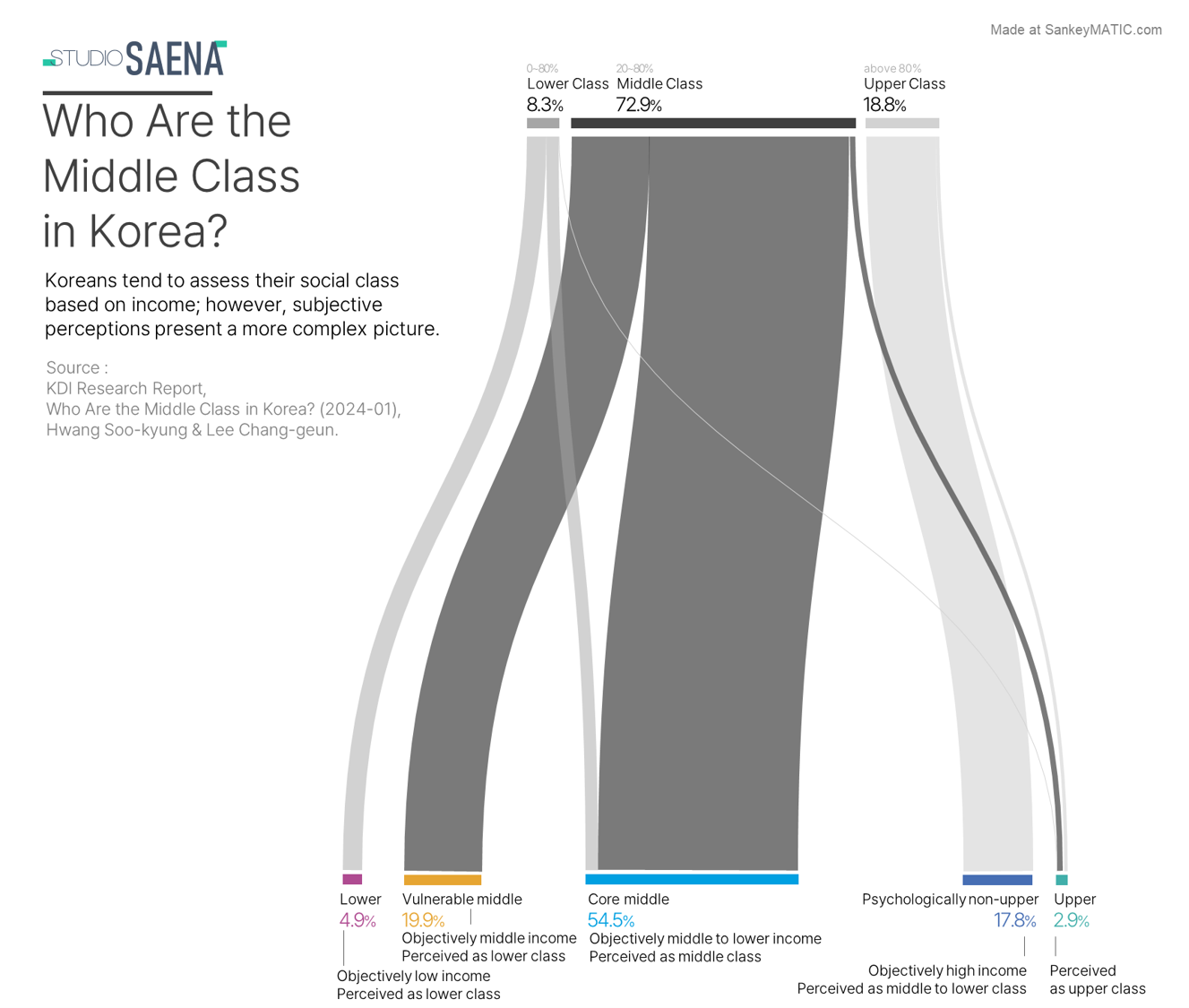How Is the Middle Class in Korea Changing?
In the previous post, I discussed how different patterns emerge when we categorize people from various income levels—upper, middle, and lower—based on their subjective perceptions.
If we visualize this situation using a Sankey diagram, the flow from income to subjective judgment becomes much clearer.
Observe how people who were simply divided into three income brackets are distributed across five subjective judgment categories below. The flow of those considered middle class based on income is highlighted with a darker color to emphasize our focus on the middle class.
The report explains that the reason for adding subjective judgment to the middle class is related to the effectiveness of policy measures.
If a policy is designed for the middle class, will people who subjectively consider themselves lower or upper class agree with its necessity? A policy that doesn’t resonate with people is less likely to be implemented effectively.
Consider this: have you ever unjustifiably categorized yourself as lower class just because others around you earn more or have more assets? Or, conversely, have you tried to elevate yourself to the upper class without a solid basis?
One bitter realization from this report is,
that in Korea, people go from competing based on grades up until age 19 to competing based on wealth as adults.
In the report, we see that educational attainment has receded as a criterion for considering oneself middle class, suggesting that we may be too easily swayed by shifting standards over time.




